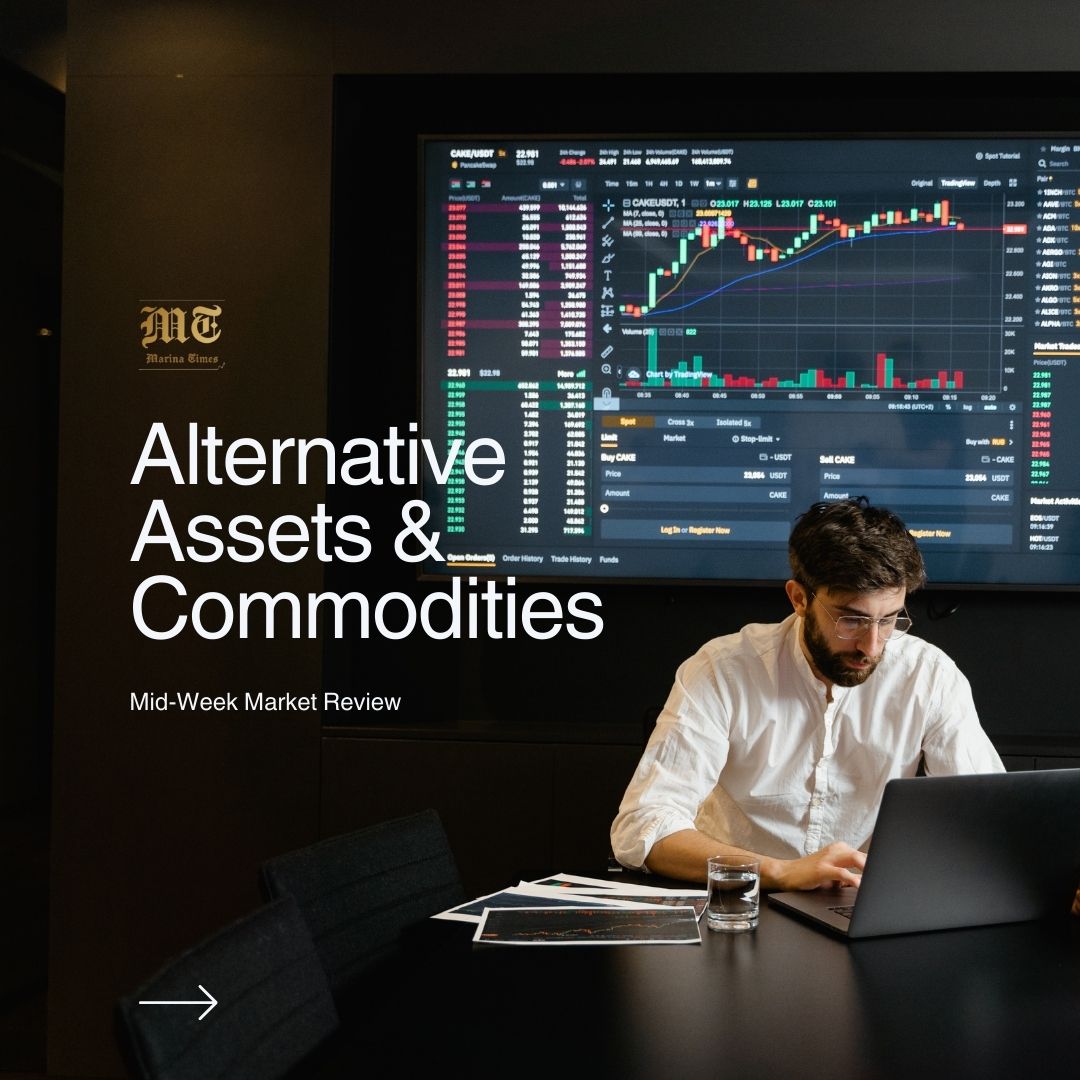

The oil market experienced noticeable fluctuations last week. Brent crude began the week at $79.72 per barrel, traded as high as $79.99, dipped to a low of $76.92, and ultimately closed at $77.55. Meanwhile, WTI crude opened at $78.19, reached a high of $78.47, fell to a low of $74.01, and ended the week at $74.66. Analysts suggest these price movements were largely driven by the U.S. President’s recent announcement of measures to increase domestic oil production, alongside a call for OPEC to reduce crude prices.
The ongoing oversupply of crude, combined with weaker demand projections from China, continues to weigh on oil futures. On Monday, oil prices experienced a sharp decline, with Brent crude falling by $1.32 to $77.11 per barrel and WTI dropping $1.45 to $73.15. These prices represented the lowest closing levels for both benchmarks since early January.
This decline was further exacerbated by unexpected news from China. DeepSeek, a Chinese startup offering an affordable AI model, quickly gained traction, surpassing its U.S. counterpart, ChatGPT, to become the top-rated free app on Apple’s App Store. Even before this development, oil prices were already under pressure due to weak economic data from China and growing concerns about the potential impact of U.S. tariffs on global trade and economic growth. As a result, the U.S. market, particularly the Nasdaq, experienced a significant drop, with Nvidia taking the hardest hit due to DeepSeek’s rise.
The U.S. President’s efforts to address rising energy costs and the potential for new U.S. sanctions on key oil producers, such as Russia and Iran, could complicate the objective of lowering energy prices. Market participants are also focusing on the potential imposition of tariffs in February, which could negatively impact global economic growth and demand for oil.
Similarly, trade policy continues to play a central role in shaping market sentiment. There is also speculation that his administration may impose a 25% tariff on certain imports, raising concerns about the ripple effects on global demand for commodities, including oil. The potential for a trade conflict, particularly with China, Canada, and Mexico, has further strained the oil market. These trade tensions could disrupt global energy trade and impact oil demand.
Further complicating the outlook for oil prices, China’s January manufacturing data showed an unexpected contraction, fueling concerns about oil demand in the world’s largest crude importer. Additionally, the forecast for warmer-than-normal temperatures in the U.S. throughout the week has contributed to a softer demand outlook for heating fuels. This follows a recent surge in natural gas and diesel prices due to extreme cold weather, further moderating the outlook for energy consumption.
Despite the challenges, oil prices showed some recovery on Tuesday. Brent crude rose by 52 cents to settle at $77.63, while WTI crude gained 77 cents, closing at $73.92. However, the gains were limited, as market participants remained cautious due to the ongoing concerns about tariffs and the overall risk environment.
The market remains sensitive to a combination of factors, including trade tensions and geopolitical uncertainties. While some short-term price fluctuations are expected, the broader outlook for oil prices remains uncertain, with concerns about global economic growth and oil demand likely to continue influencing market sentiment in the coming weeks.
Bitcoin experienced a slight dip over the past week, decreasing by 2.2%, and is currently trading at $102,000 as of this morning. It hit a low of $98,380 before rebounding, showing a typical volatile movement for the asset. Even with these fluctuations, Bitcoin remains strong, hovering just above the $100,000 mark, which is a significant psychological level for traders and investors.
Ethereum, on the other hand, saw a slightly steeper drop of 4.1% over the same period. It is currently priced at $3,155, reflecting the broader market’s downward trend. Ethereum’s price action has been slightly more bearish compared to Bitcoin, but it’s worth noting that Ethereum’s market dynamics often differ, especially with the ongoing developments around Ethereum 2.0 and its evolving role in decentralised finance (DeFi) and smart contracts.
Both assets have shown resilience, but these fluctuations remind us of the inherent volatility of the crypto market. With growing institutional interest and regulatory movements, these short-term price changes are part of the ongoing journey toward long-term growth for both Bitcoin and Ethereum.
Altcoins, however, are experiencing a sharp downturn. For instance, the Trump meme token dropped to $27 from a high of $75, with the broader alt market bleeding RED—showing significant losses.
This week has been remarkable in the cryptocurrency world, with multiple high-stakes developments happening at once, which could significantly shape the future of the space. Notably, Brian Moynihan, CEO of Bank of America, announced that the bank is ready to embrace cryptocurrency, pending regulatory approval. This marks a potential game-changing shift in the financial landscape, as Bank of America is one of the largest and most influential institutions globally. If they move forward with crypto, it could bring millions of new users into the fold—many of whom might not have previously considered digital assets as an investment vehicle. This kind of mainstream financial integration could propel cryptocurrencies to new heights, both in terms of value and adoption.
At the same time, the United States Securities and Exchange Commission (SEC) took a big step towards establishing clearer rules for the crypto market by launching a new crypto task force. The goal is to create a comprehensive regulatory framework for crypto assets, which is something the market has been desperately seeking. For years, there has been a sense of uncertainty surrounding regulation, and many have argued that this lack of clarity has hindered growth and prevented institutions from fully embracing the space. With the creation of this task force, we could finally see the regulatory clarity that could stabilise the market in the long run. However, it’s worth noting that the market hasn’t exactly reacted the way analysts predicted. Despite these bullish moves, the price fluctuations are still volatile, and some expected immediate spikes in value that simply haven’t materialised yet.
In another intriguing development, Senator Cynthia Lummis was appointed as the Chair of the Senate Banking Subcommittee on Digital Assets. Lummis has been a vocal supporter of Bitcoin and digital assets for years, and her new position only strengthens the argument that the U.S. government is becoming increasingly interested in understanding and integrating cryptocurrencies into the broader financial system. She recently remarked, ‘The future for Bitcoin and digital assets in America has never been brighter,’ a sentiment that surely resonates with many in the crypto community. If she continues to champion the cause, her influence could help guide the legislative framework that could significantly boost the legitimacy and stability of digital assets in the U.S.
Adding another layer to the conversation, President Donald Trump recently made headlines with his announcement of a $500 billion AI investment, in partnership with Oracle and SoftBank. In a separate move, Trump also signed an executive order focused on creating a digital asset stockpile. This is a sign that governments and major players are increasingly seeing the value in crypto—not just as a speculative asset, but as a key part of future financial systems. If these investments come to fruition, it could lead to a new wave of institutional involvement, further legitimising the space.
Morgan Stanley, another key financial institution, also signaled its growing interest in the crypto world. The CEO revealed that the bank is already in talks with regulators to offer crypto transactions. This is another sign that the traditional banking sector is beginning to embrace the shift toward digital assets, and if regulatory clarity continues to improve, it could mean even more traditional institutions follow suit.
However, despite these positive developments, it’s important to acknowledge that the market isn’t always reacting in a way that would make most analysts optimistic. Day traders, in particular, seem to be playing an outsized role in market fluctuations. A notable example of this behaviour can be seen with MicroStrategy, a business intelligence company that has been aggressively acquiring Bitcoin. It’s become a well-known pattern: when MicroStrategy buys more Bitcoin, the price often spikes, only for day traders to manipulate the market by dumping their assets for short-term profits. This creates an environment of volatility, where the price rises temporarily before falling back down as investors begin to panic and sell off. This has happened at least six times in recent months, further demonstrating how easily the market can be swayed by large actors and speculative trading.
So, where does all of this leave us? While the crypto market is undeniably full of promise, it’s clear that it’s still in its infancy, and the road ahead will likely be filled with both setbacks and breakthroughs. The entry of massive players like Bank of America, along with governmental movements toward regulation and institutional adoption, is a sign that we are on the verge of something bigger. However, for now, volatility remains the name of the game, and it’s important to keep a level head while navigating these shifting tides.
For anyone reading this, it’s crucial to remember that if you’re involved in crypto at this stage, you’re still early. Even with the fluctuations, you’re on the ground floor of something transformative. Whether you’re a long-term believer in digital assets or simply navigating the short-term trends, it’s essential to stay informed, stay cautious, and most importantly, remain patient. The market may be full of unpredictable moments, but the future of crypto has never looked so full of potential.